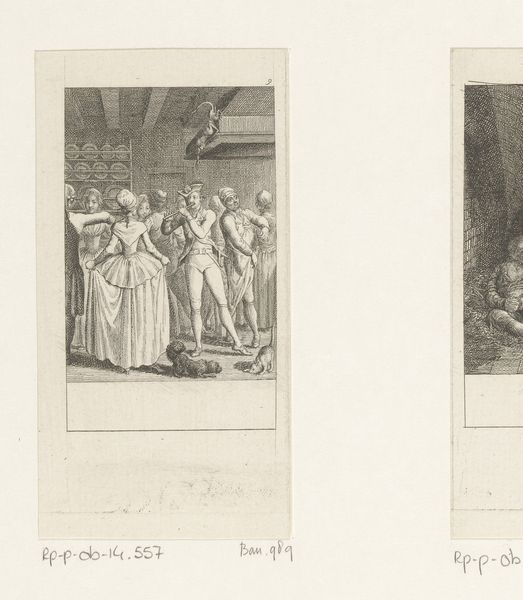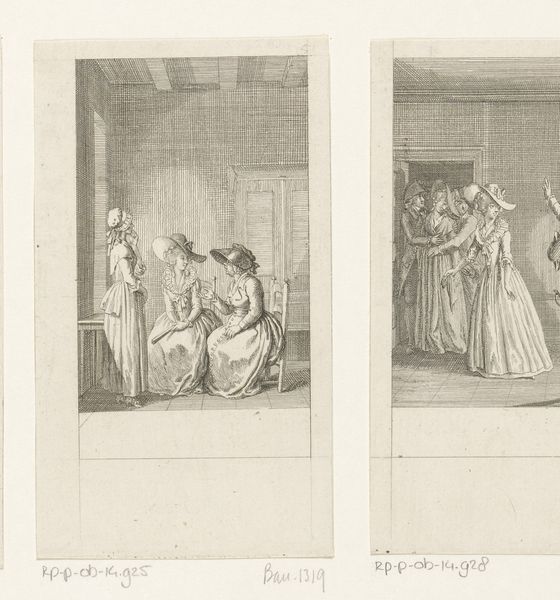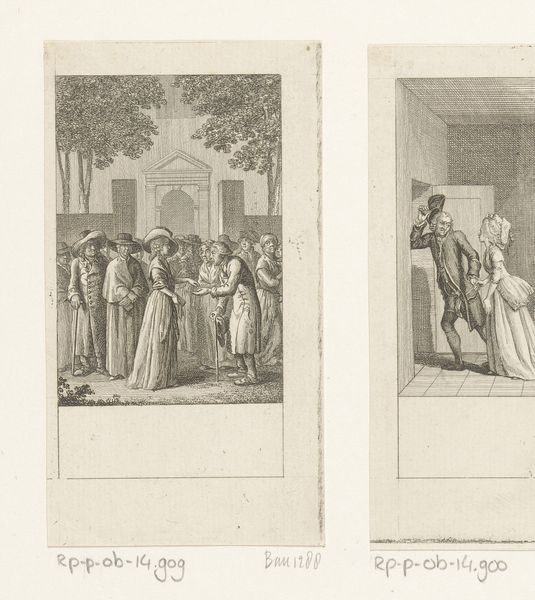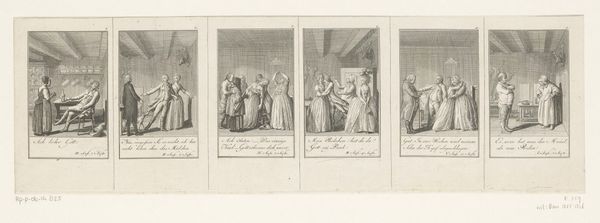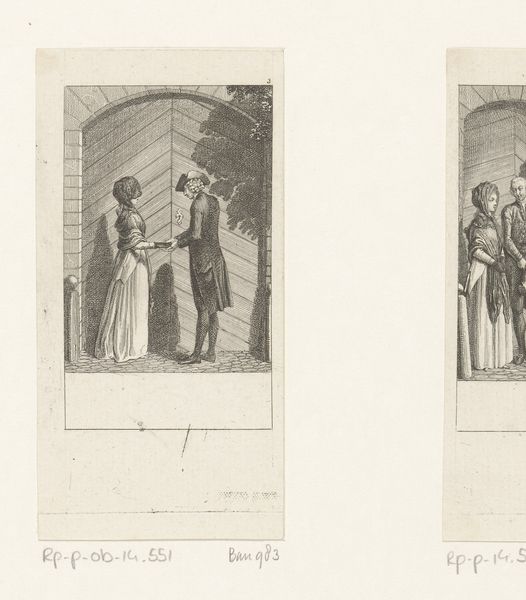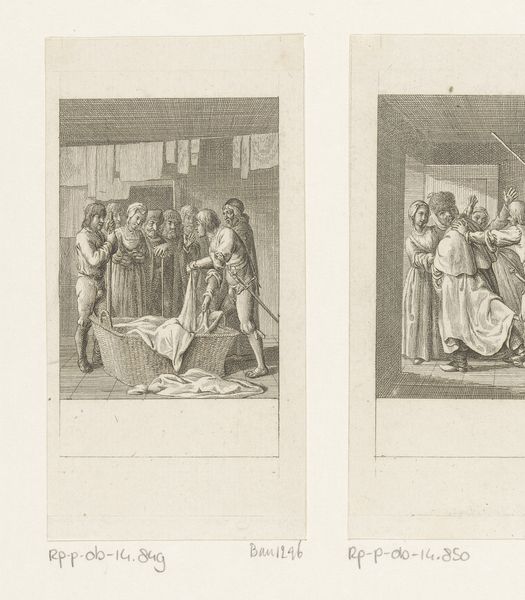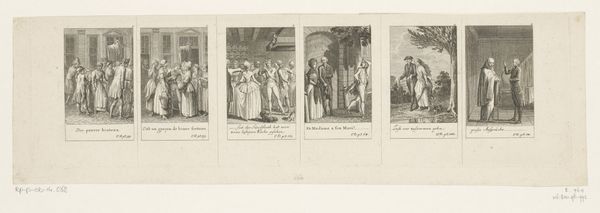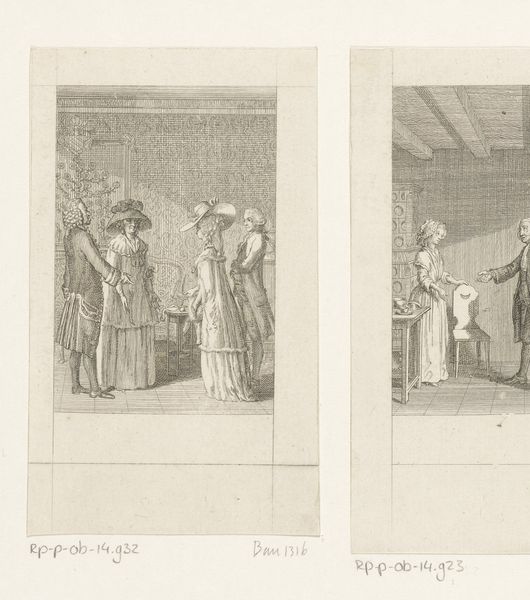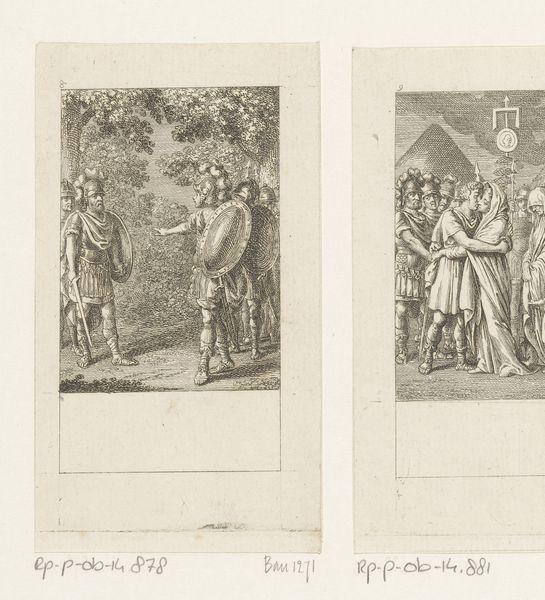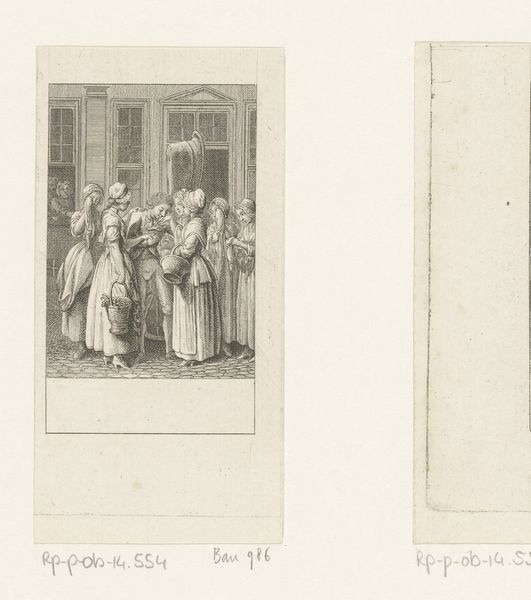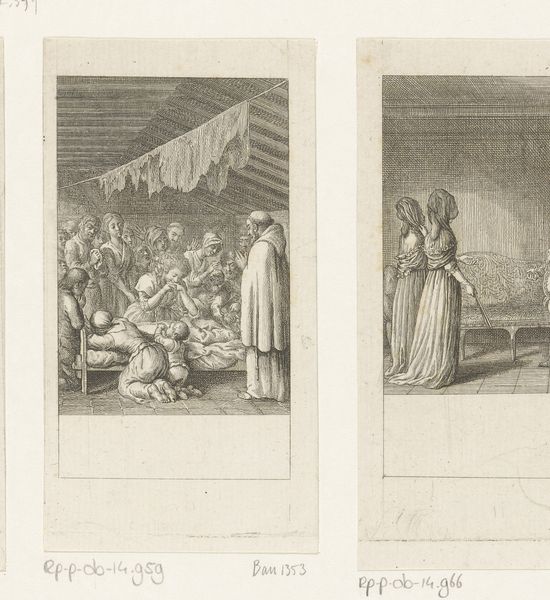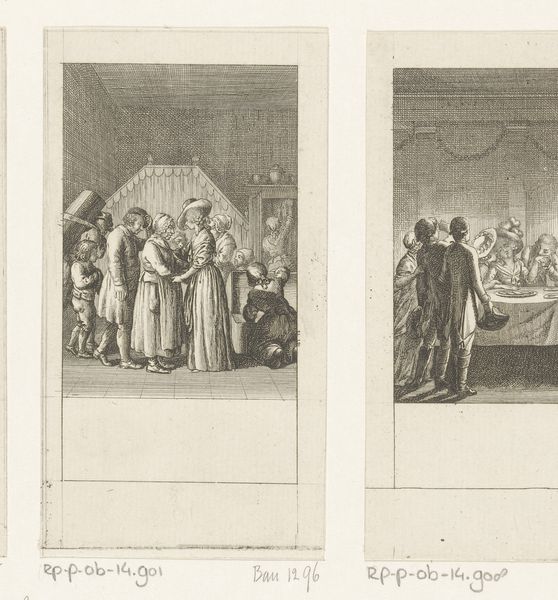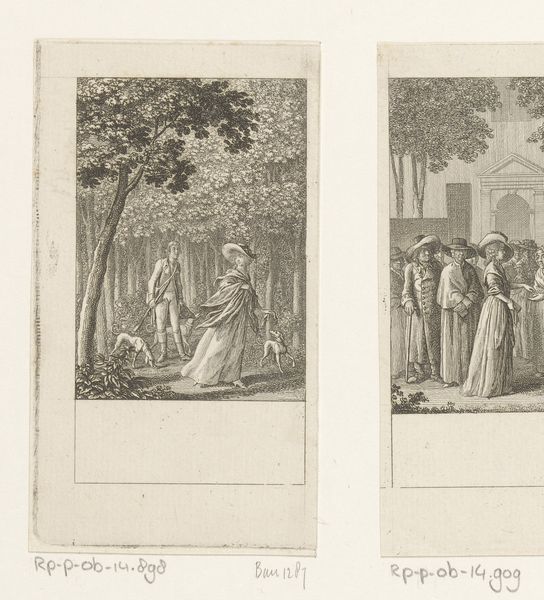
Sir Robert en zijn zus kijken toe hoe Camille een waskom vasthoudt en de arts de zieken verzorgt 1787
0:00
0:00
Dimensions: height 116 mm, width 60 mm
Copyright: Rijks Museum: Open Domain
Editor: We're looking at "Sir Robert en zijn zus kijken toe hoe Camille een waskom vasthoudt en de arts de zieken verzorgt," a print by Daniel Nikolaus Chodowiecki, made in 1787. The starkness of the engraving feels so immediate. What's striking to me is the juxtaposition of the intimate domestic scene inside and the public setting just to the side. What do you make of that contrast? Curator: Well, consider the historical context. The late 18th century saw a rise in sentimentalism and a focus on private virtue being reflected in public life. These genre paintings, and particularly prints that circulated widely, played a crucial role in shaping public perception. See how the act of care is displayed in both panels. The one to the left domestic and inside. The second takes place outside, observed by onlookers. Editor: So it's about presenting charity as a virtuous behavior meant to be seen? Almost as if private compassion needs a public stage? Curator: Exactly! The print's reproduction made it accessible, acting almost as propaganda for societal improvement through charitable action, framing how people ought to behave and perceive such behavior. Who is performing and for whom is an important question to keep asking as we look at art across the ages. Do you think the artist takes a critical stance on the culture they live in, or perhaps support the status quo? Editor: I hadn't thought about the dissemination of the print itself as a form of promoting a social ideal. That adds another layer to its meaning. Now I wonder how different audiences interpreted this image. Curator: Precisely! That’s where the true richness of historical interpretation lies – understanding the evolving dialogues that art provokes.
Comments
No comments
Be the first to comment and join the conversation on the ultimate creative platform.
